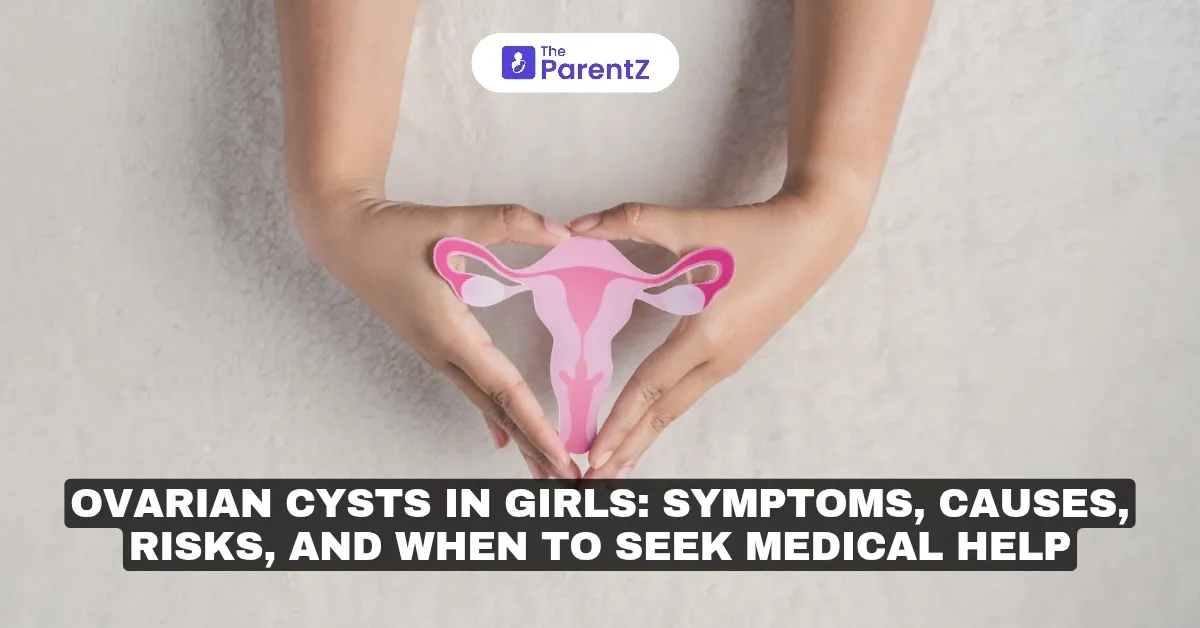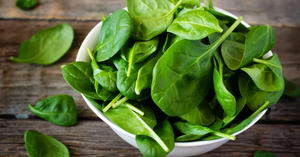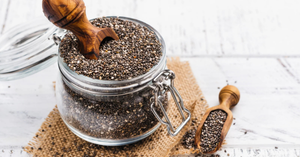Abdominal pain in children, especially girls, can be concerning for parents. While common causes include constipation, infections, or gas, ovarian cysts are a lesser-known but important condition to consider. Ovarian cysts can occur in infants, young girls, and adolescents, often without causing symptoms. However, when they do, they may present as abdominal or pelvic pain, making it crucial for parents to differentiate cyst-related pain from other causes.
What Are Ovarian Cysts?
• Ovarian cysts are fluid-filled sacs that develop on or inside the ovaries.
• Girls are born with ovaries, and cysts can form even before puberty due to hormonal fluctuations.
• While most cysts are benign (non-cancerous) and resolve on their own, some can lead to complications.
Types of Ovarian Cysts in Children and Adolescents
Functional Cysts:
• The most common type in adolescents, linked to the menstrual cycle.
• Includes follicular cysts (when an egg doesn’t release) and corpus luteum cysts (after an egg is released).
• Usually harmless and disappear without treatment.
• Dermoid Cysts (Mature Cystic Teratomas):
• Contain tissue like hair, skin, or fat.
• Typically benign but may require surgery if large.
Cystadenomas:
• Develop from ovarian tissue, filled with watery or mucous material.
• Can grow large, causing discomfort or complications.
Endometriomas:
• Result from endometriosis, where uterine tissue grows outside the uterus.
• Rare in young girls but possible in adolescents.
Hemorrhagic Cysts:
• Occur when a cyst bleeds internally.
• Can cause sudden, severe abdominal pain.
Causes of Ovarian Cysts in Girls
• Hormonal Fluctuations:
• Changes during puberty can lead to cyst formation.
• Congenital Factors:
• Some cysts are present at birth due to maternal hormone exposure.
• Underlying Health Conditions:
• Conditions like polycystic ovary syndrome (PCOS) or endometriosis can contribute to cyst development.
Common Symptoms of Ovarian Cysts in Girls
While many ovarian cysts are asymptomatic, certain signs may indicate their presence, especially if the cyst grows large, ruptures, or causes torsion:
Abdominal or Pelvic Pain:
• Dull, aching pain on one side of the lower abdomen.
• Sudden, sharp pain if the cyst ruptures or twists (torsion).
Abdominal Bloating or Pressure:
• A sensation of fullness, bloating, or heaviness in the lower abdomen.
Changes in Urination or Bowel Movements:
• Increased urge to urinate or difficulty emptying the bladder.
• Constipation or changes in bowel habits.
Menstrual Irregularities (in Adolescents):
• Missed periods, heavy bleeding, or spotting between cycles.
Nausea and Vomiting:
• Particularly if the cyst causes ovarian torsion, cutting off blood supply to the ovary.
Pain During Physical Activity:
• Discomfort during exercise, sudden movements, or sexual activity in older adolescents.
How Ovarian Cyst Pain Differs from Other Types of Abdominal Pain
Pain Location:
• Ovarian cyst pain is often one-sided in the lower abdomen.
• Appendicitis usually starts near the belly button and shifts to the lower right side.
Pain Onset and Pattern:
• Ovarian torsion causes sudden, intense pain.
• Functional cysts cause intermittent or mild discomfort.
Associated Symptoms:
• Nausea and vomiting may occur with ovarian torsion but are uncommon with simple cysts.
• Gastrointestinal issues like diarrhea are more common with infections, not ovarian cysts.
Potential Complications of Ovarian Cysts
While most ovarian cysts are not dangerous, some can cause serious complications:
Ovarian Torsion:
• A large cyst can twist the ovary, cutting off its blood supply.
• This is a medical emergency requiring urgent surgery to save the ovary.
Ruptured Cyst:
• Can cause internal bleeding, leading to sudden, severe pain.
• If bleeding is heavy, it may cause dizziness, weakness, or fainting.
Infection:
• Rare but possible if a cyst ruptures and becomes infected.
Fertility Issues:
• Repeated ovarian torsion or large cysts can affect ovarian function if not treated promptly.
When Should Parents Seek Medical Help?
Seek immediate medical attention if your child experiences:
• Sudden, severe abdominal or pelvic pain
• Pain accompanied by fever, vomiting, or dizziness
• Signs of shock, such as rapid heartbeat, cold or clammy skin, confusion, or fainting
• Severe pain after physical activity or trauma
• Inability to keep fluids down, leading to dehydration
Schedule a doctor’s appointment soon if your child has:
• Ongoing or recurrent lower abdominal pain
• Unusual bloating or a feeling of fullness
• Irregular periods or abnormal vaginal bleeding
• Difficulty urinating or changes in bowel habits
How Are Ovarian Cysts Diagnosed?
Physical Examination:
• The doctor will gently press on the abdomen to locate tenderness or swelling.
Ultrasound:
• A non-invasive imaging test to detect cysts, determine their size, and check for complications.
• In young girls, an abdominal ultrasound is typically used.
Blood Tests:
• To check for signs of infection, anemia, or hormonal imbalances.
• CA-125 test may be ordered if there’s concern about malignancy (rare in children).
Urine and Pregnancy Tests (for Adolescents):
• To rule out urinary tract infections or pregnancy-related issues.
Treatment Options for Ovarian Cysts
The approach to treatment depends on the cyst’s size, type, and whether it’s causing symptoms:
Observation (Watchful Waiting):
• Small, simple cysts often resolve on their own without treatment.
• Follow-up ultrasounds monitor for changes.
Medications:
• Pain relievers like ibuprofen for mild to moderate discomfort.
• Hormonal therapy (such as birth control pills) to prevent new cysts in adolescents with recurrent issues.
Surgery:
• Required if the cyst is large, persistent, or causing complications like torsion or rupture.
• Laparoscopy: Minimally invasive surgery to remove the cyst.
• Laparotomy: Open surgery for very large cysts or suspected cancer (rare in children).
Recovery and Follow-Up Care
After Surgery:
• Recovery from laparoscopic surgery is faster (1–2 weeks) than open surgery (4–6 weeks).
• Follow-up appointments ensure proper healing and monitor for recurrence.
Long-Term Monitoring:
• If your child has a condition like PCOS or endometriosis, regular check-ups may be needed.
Conclusion
Ovarian cysts in girls and adolescents are usually benign and self-limiting. However, some cysts can cause complications like torsion, rupture, or infection, which require immediate medical attention. Parents should be aware of the symptoms—especially sudden, severe abdominal pain—and seek prompt care when needed. Early diagnosis and timely treatment are key to preventing complications and protecting long-term reproductive health.








Be the first one to comment on this story.